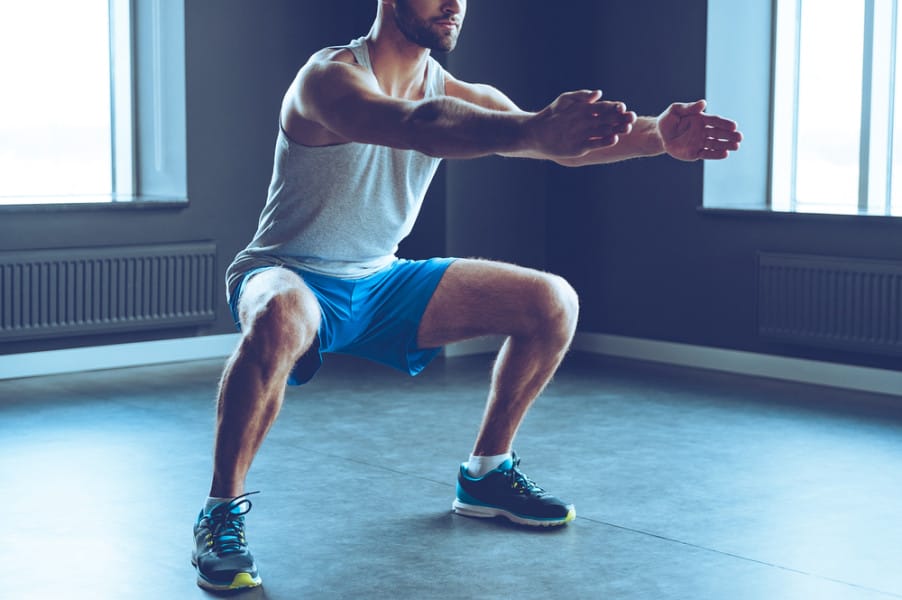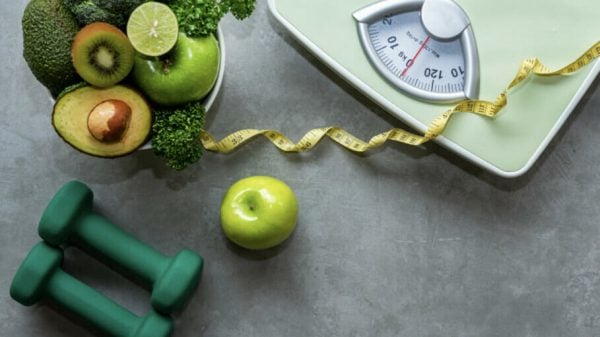This article examines the advantages of squats, such as the muscles engaged, appropriate method, and diverse forms of the squat exercise. The core advantages of squats include their capability to target several muscle groups, enhance core power, provide practical exercise, prevent falls, enhance athletic capability, boost bone density, increase suppleness, and accessibility.
Squats chiefly target the glutes, quadriceps, hamstrings, and adductor muscles, whereas additional muscles involved are the core, back, hip flexors, and calf muscles. Squats can also be adapted to be executed with or without equipment, making them a flexible workout for people at varying fitness levels.
The article also provides a step-by-step manual on executing a fundamental squat with the proper posture. Furthermore, it outlines six deviations of the squat exercise, including beginner alterations and weighted and plyometric choices. These modifications comprise the wall squat, box squat, goblet squat, jump squat, pistol squat, and single-leg squat.
On the whole, the article underscores the significance of squats for overall fitness progress and highlights their efficacy in targeting diverse muscle groups, enhancing core power, and providing practical advantages for daily activities.
- Position yourself a few inches away from a chair, bench, or box, with your back facing outward.
- Assume the squat stance, with your feet shoulder-width apart and your toes slightly angled outwards.
- Flex your knees as you push your hips rearward into a squatting stance.
- Continue descending until your buttocks make contact with the box (without sitting completely).
- As soon as your buttocks tap the box, propel through your heels to return to a standing stance.
- Repeat 2 to 3 sets of 10 to 12 repetitions.
1. Goblet squat
The goblet squat necessitates holding a kettlebell or dumbbell, thereby intensifying engagement of your arms and leg muscles compared to a traditional squat. Carrying the weight in front also necessitates activation of your core muscles to maintain an upright posture.
- Grasp a dumbbell, kettlebell, or weighted plate with both hands at chest level.
- Take the squat position, with your feet shoulder-width apart and your toes slightly angled outwards.
- Bend your knees as you push your hips rearward into a squat stance.
- Maintain the weight in front and keep your torso upright throughout the motion.
- Squat down until your hips descend beneath your knees. (If you are unable to squat as low, descend as far as you can comfortably.)
- At the conclusion of the motion, keep your elbows within your knees.
- Propel through your heels to rise and return to the starting position.
- Repeat 1 to 2 sets of 10 to 12 repetitions.
2. Back squat
A back squat necessitates supporting a barbell on your shoulders for added resistance.
- Position a barbell (loaded or just the bar) behind your neck resting on your shoulders. Grip the bar at each end with your palms facing outward from your body.
- Stand with your feet shoulder-width apart, shoulders drawn back, your toes slightly angled outwards, and your arms at your sides.
- Flex your knees as you push your hips backward and transfer your weight onto your heels as you squat down.
- Maintain an upright chest and a tight core.
- Squat down until your knees are parallel to the ground, or halt before that if you experience discomfort or are unable to sustain proper form.
- Contract your glutes and push through your heels to straighten your legs and return to a standing stance.
- Repeat 2 to 3 sets of 1 to 15 repetitions.
3. Overhead squat
The overhead squat engages your arms, comprising the deltoids and triceps, as well as your core to aid in stability. It also augments flexibility in your arms and thoracic spine.
- Assume the squat stance, with your feet shoulder-width apart and your toes slightly angled outwards.
- Hold a barbell or ball above your head. (If using a barbell, grasp it at each end with your palms facing outward from your body.)
- Bend your knees as you push your hips backward and transfer your weight onto your heels as you squat down.
- Squat down until your knees are parallel to the ground, or halt before that if you experience discomfort or are unable to sustain proper form.
- Contract your glutes and push through your heels to straighten your legs and return to a standing stance.
- Repeat 2 to 3 sets of 1 to 15 repetitions.
4. Jump squat
A jump squat is a plyometric exercise that aids in enhancing speed and explosive strength.
- Stand with your feet shoulder-width apart, shoulders drawn back, your toes slightly angled outwards, and your arms raised in front.
- Flex your knees as you push your hips backward and transfer your weight onto your heels as you squat down.
- Maintain an upright chest and a tight core.
- Squat down until your knees are parallel to the ground, or halt before that if you experience discomfort or are unable to sustain proper form.
- Upon reaching the bottom of the squat stance, propel through your toes to spring up and leap off the ground. Both your feet should leave the ground.
- Land softly, allowing your knees to slightly bend.
- Repeat 2 to 3 sets of 10 repetitions.
Usual posture errors and safety pointers
If you have recently suffered hip or knee injuries, consult your doctor before commencing a new workout regimen. Cease any exercise that causes discomfort and contemplate alternative squat variations to fortify your legs. Ensure that you execute the correct squat posture and avoid common squat posture errors.
1. Pay attention to your knees
Your knees should not collapse during the execution of a squat.
“Guarantee your knees stay aligned with your toes throughout the entire movement,” Peak advises. “I frequently instruct clients to envision pushing their knees outward while squatting. This mental prompt will aid in maintaining proper form.”
2. Maintain an upright chest
Avert allowing your chest to slump forward during squats. As you push your hips back for the squat, your torso will incline forward, but uphold your shoulders and chest upwards.
3. Attend to your toes
During a squat, your toes should either be oriented straight ahead or marginally angled outwards. Listen to your body and position your toes where it feels like the best alignment for you.
Pointing your toes further outwards can be employed during deep squats to acquire greater range, however, closely monitor your knees as this stance places additional strain on your joints. You should also ensure you are wearing suitable footwear for deep squats.
4. Gradually boost the resistance
When conducting resistance squats, Wilking cautions against commencing with excessive weight.
“Often, discomfort may arise because our bodies need to develop tolerance to the movement and the extra load,” she explains. “This is where gradual increase in weight is crucial. Incremental escalation in resistance will consistently yield better results.”
5. Warm up appropriately
Prior to engaging in resistance training like squats, Peak recommends a 10- to 15-minute warm-up.
“Ensure you engage in some basic cardio to elevate your heart rate and body temperature,” he suggests. “Next, incorporate some dynamic stretches to warm up the muscles and joints.”










